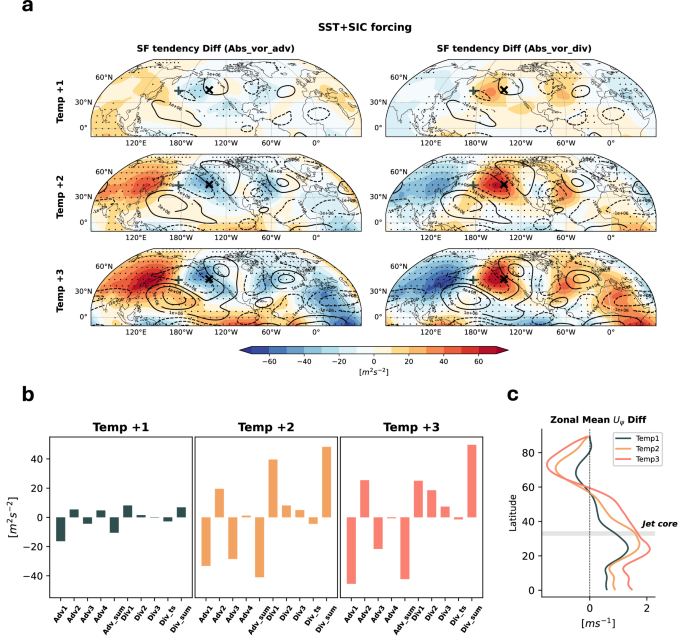This research study investigates the impact of ocean warming and sea ice loss on mid-latitude atmospheric circulation, specifically on westerly winds and corresponding stationary waves. The main findings are as follows:

Ocean Warming:
- Ocean warming plays a dominant role in intensifying the jet and maintaining amplified stationary waves, primarily through tropical convection.
- Tropical convection drives changes in the subtropical jet, which further influences the mid-latitude circulation.
Sea Ice Loss:
- Sea ice loss independently contributes to mid-latitude circulation waviness.
- The effects of sea ice loss on atmospheric circulation are noticeable but weaker compared to ocean warming.
The comparison between ocean warming and sea ice loss reveals distinct energy propagation patterns:
- Energy from lower latitudes is primarily driven by changes in tropical convection, with waves propagating towards the western ridge (SST-only).
- In contrast, sea ice loss leads to a more horizontal wave-guiding effect within mid- to high-latitude pathways.
The study also identifies an additional mechanism attributed to Arctic amplification:
- Changes in the upper-tropospheric upper latitude wind show easterly flow strengthening due to sea ice melting.
- This phenomenon may influence wave activity flux changes through distinct pathways.
Conclusion:
While ocean warming has a more significant impact on mid-latitude waviness and jet intensification, the study highlights that Arctic sea ice loss also plays a significant role in atmospheric circulation. The mechanisms responsible for these impacts are distinct but non-negligible in the near future (up to temp+2).
